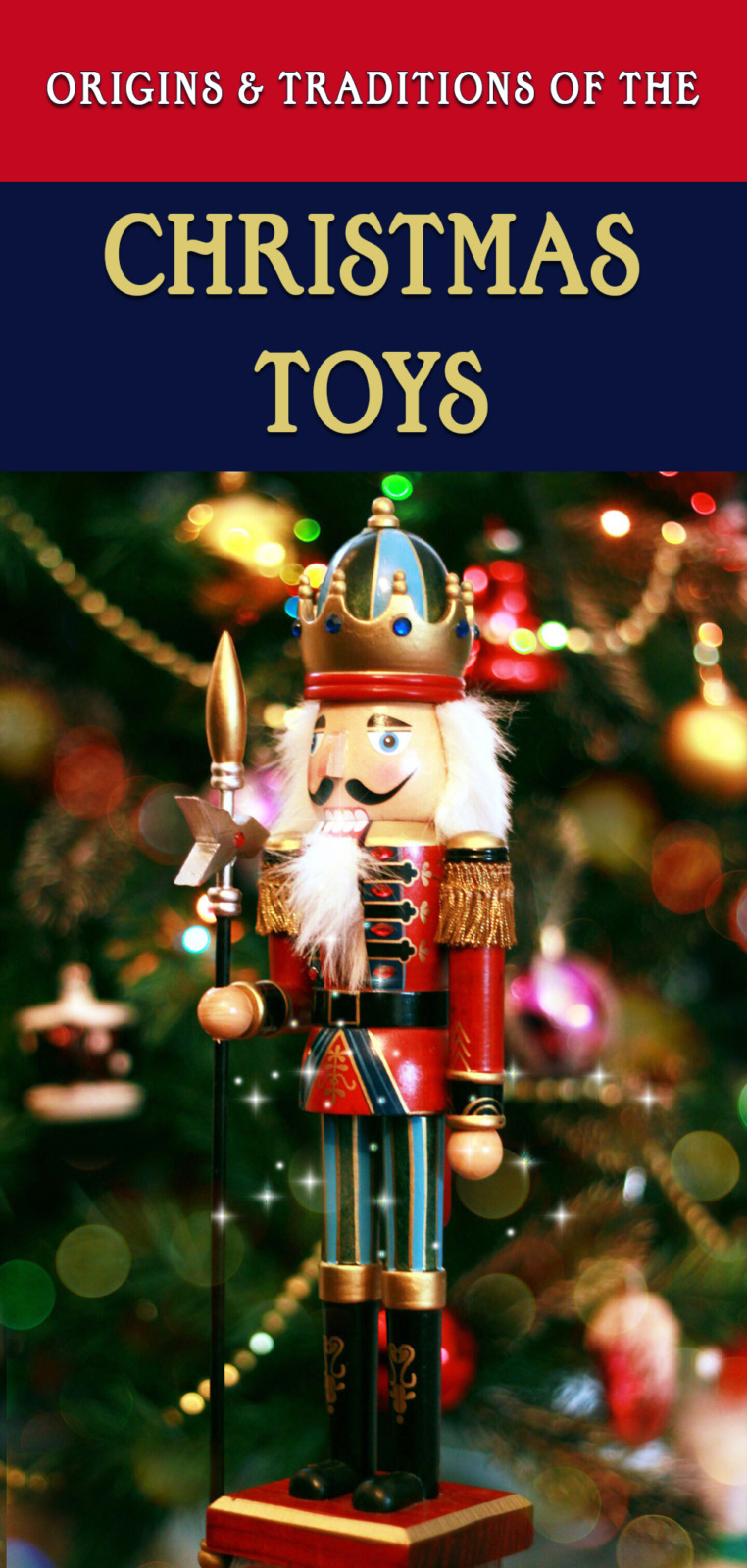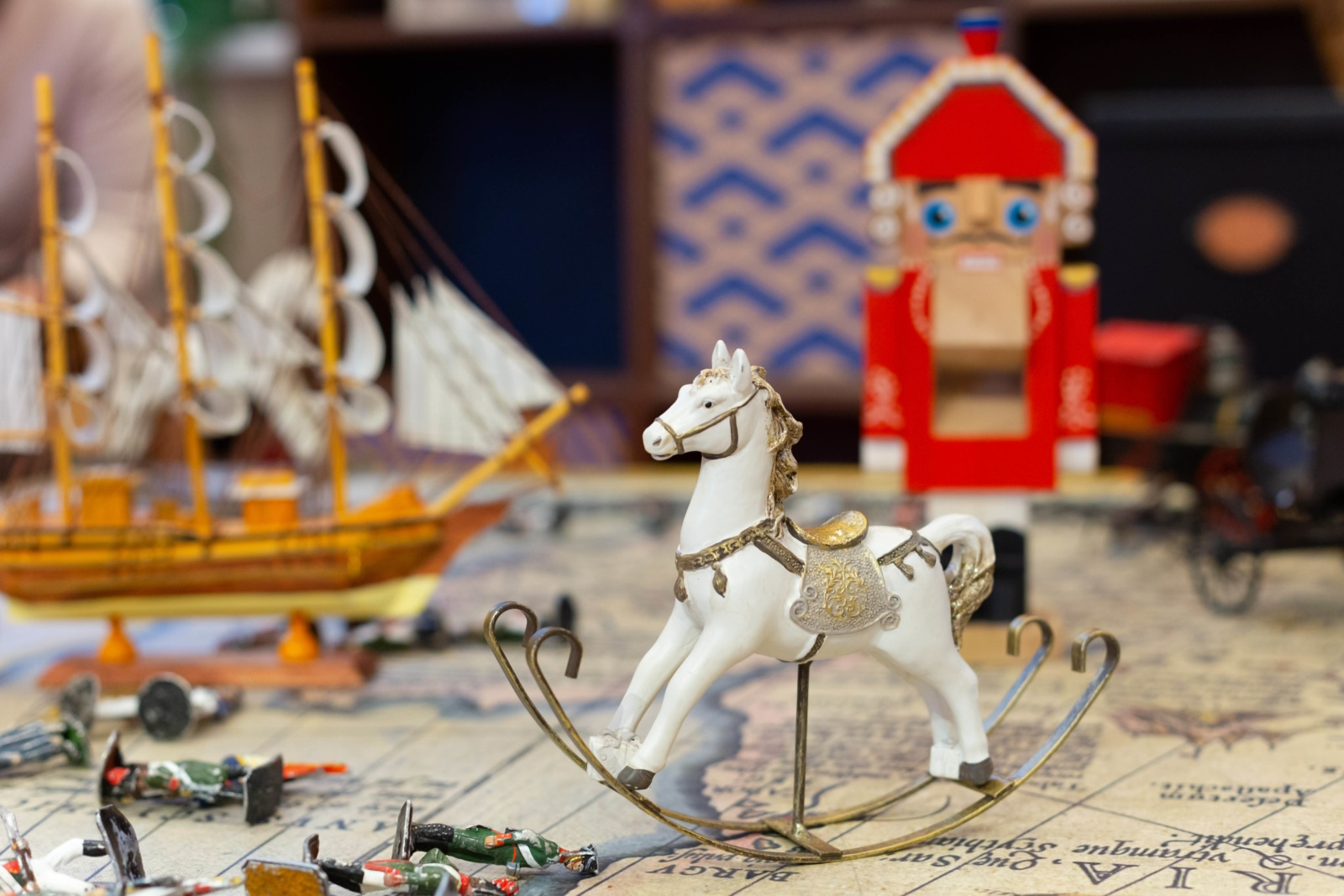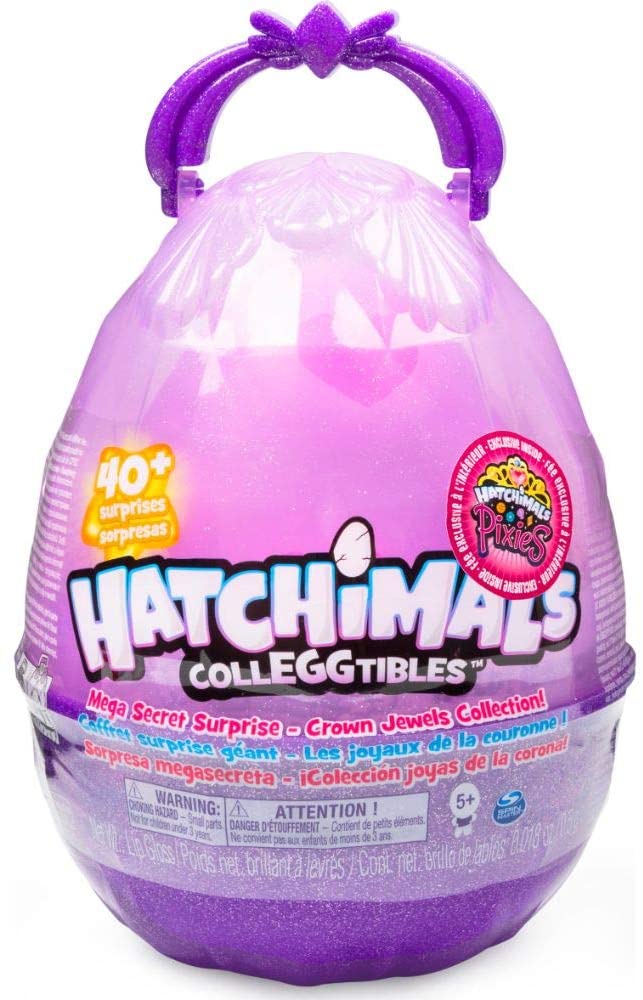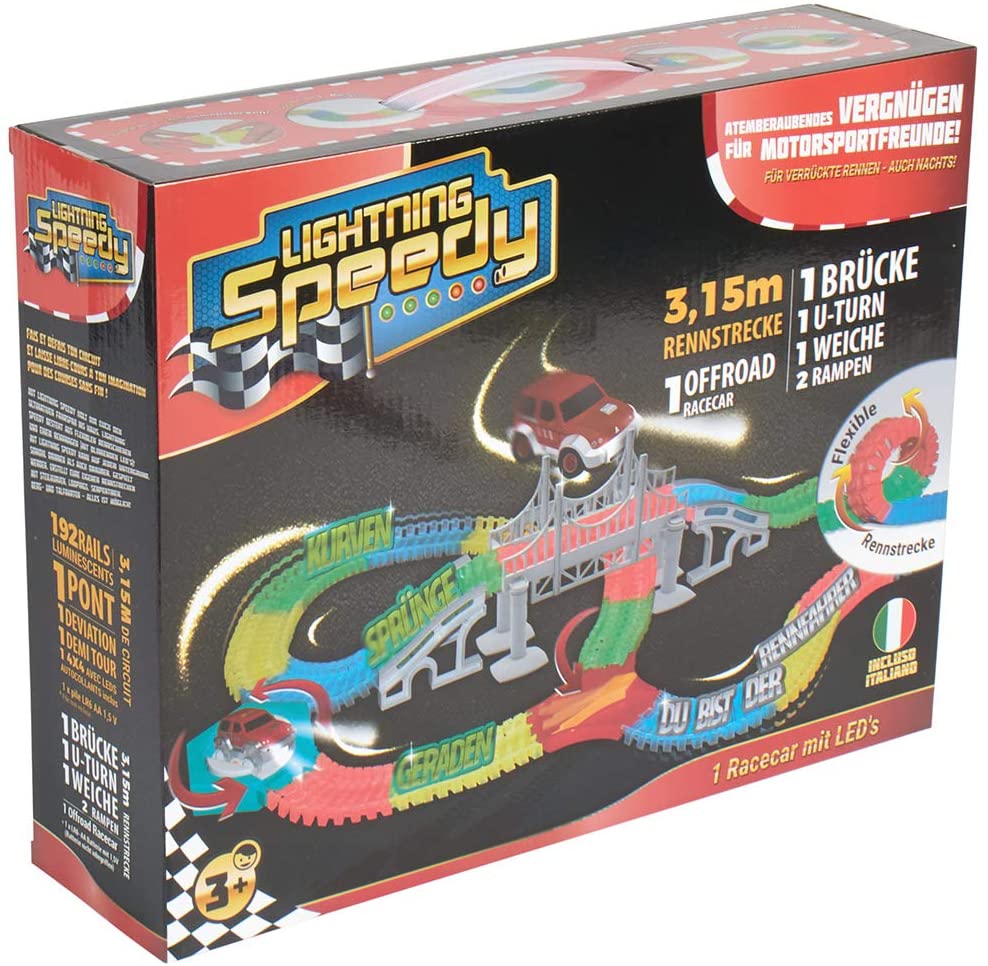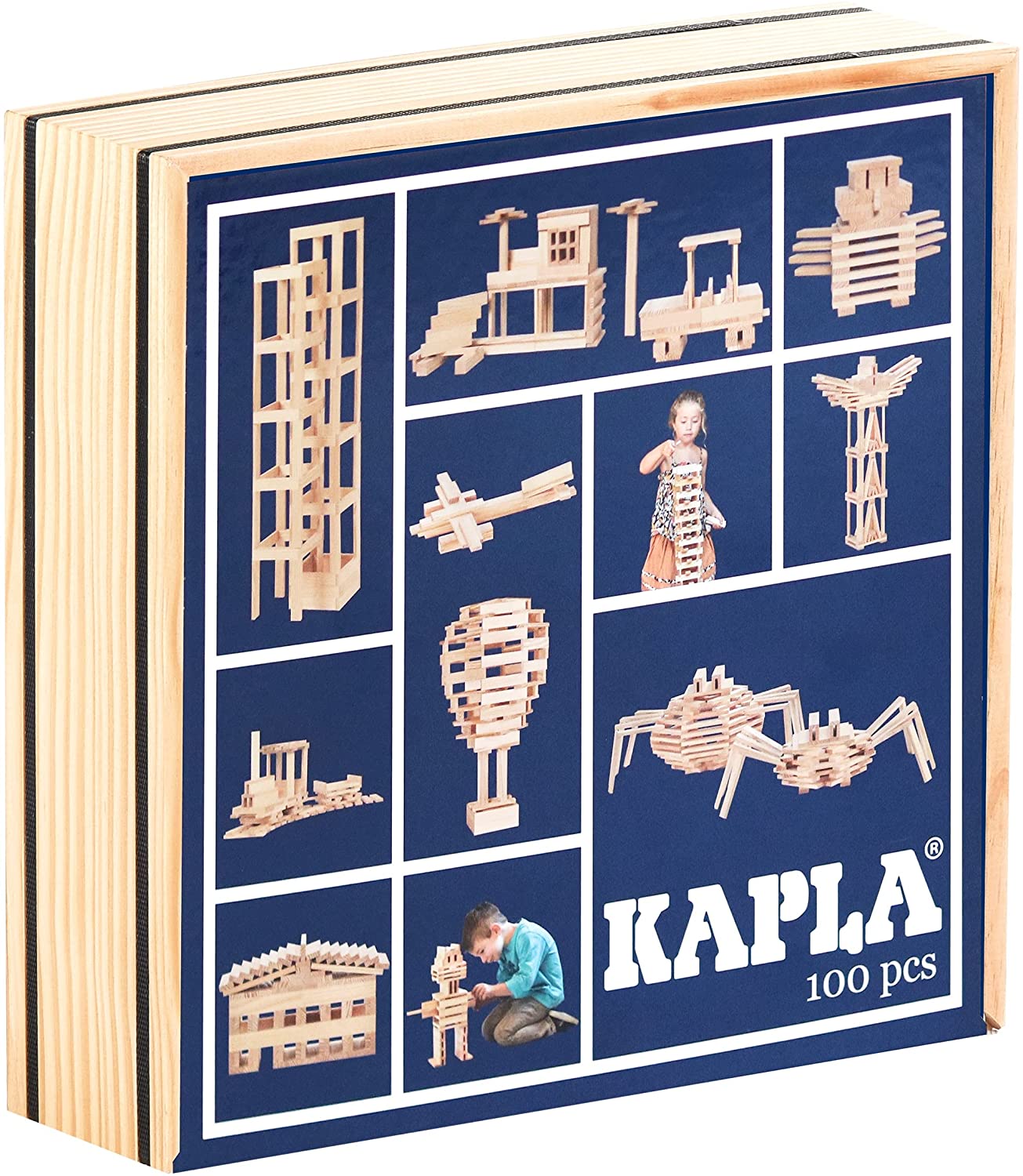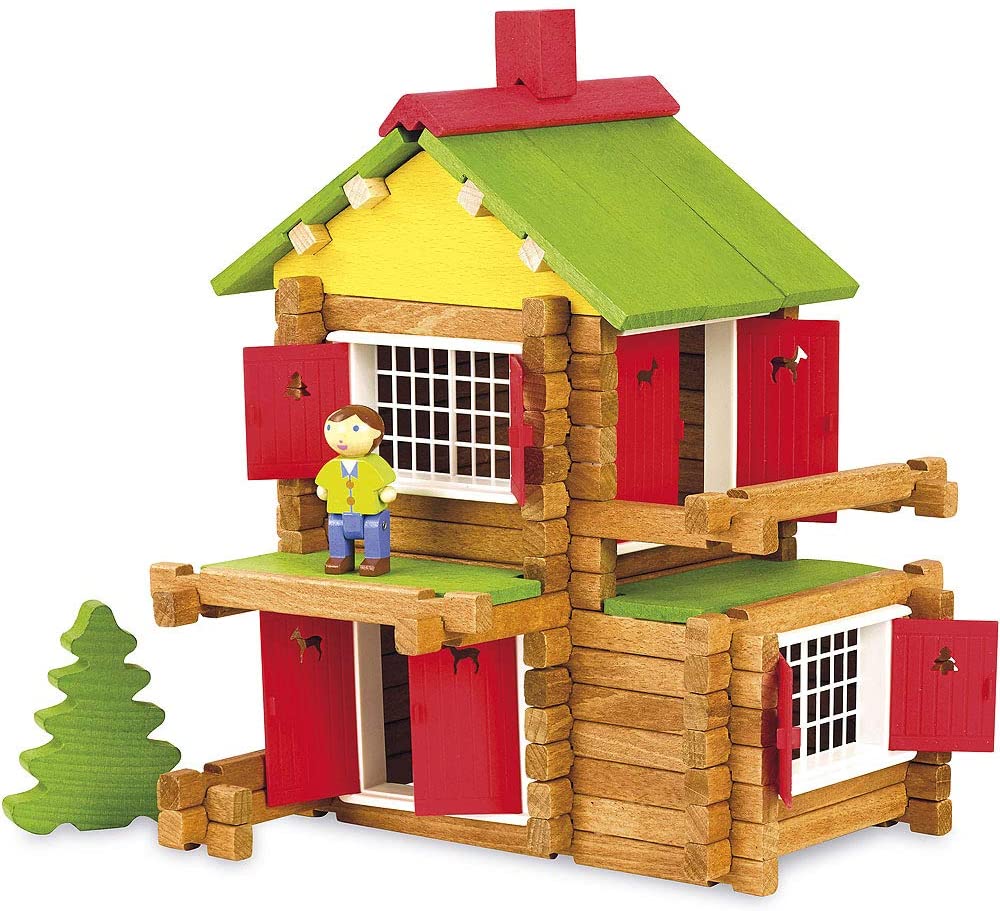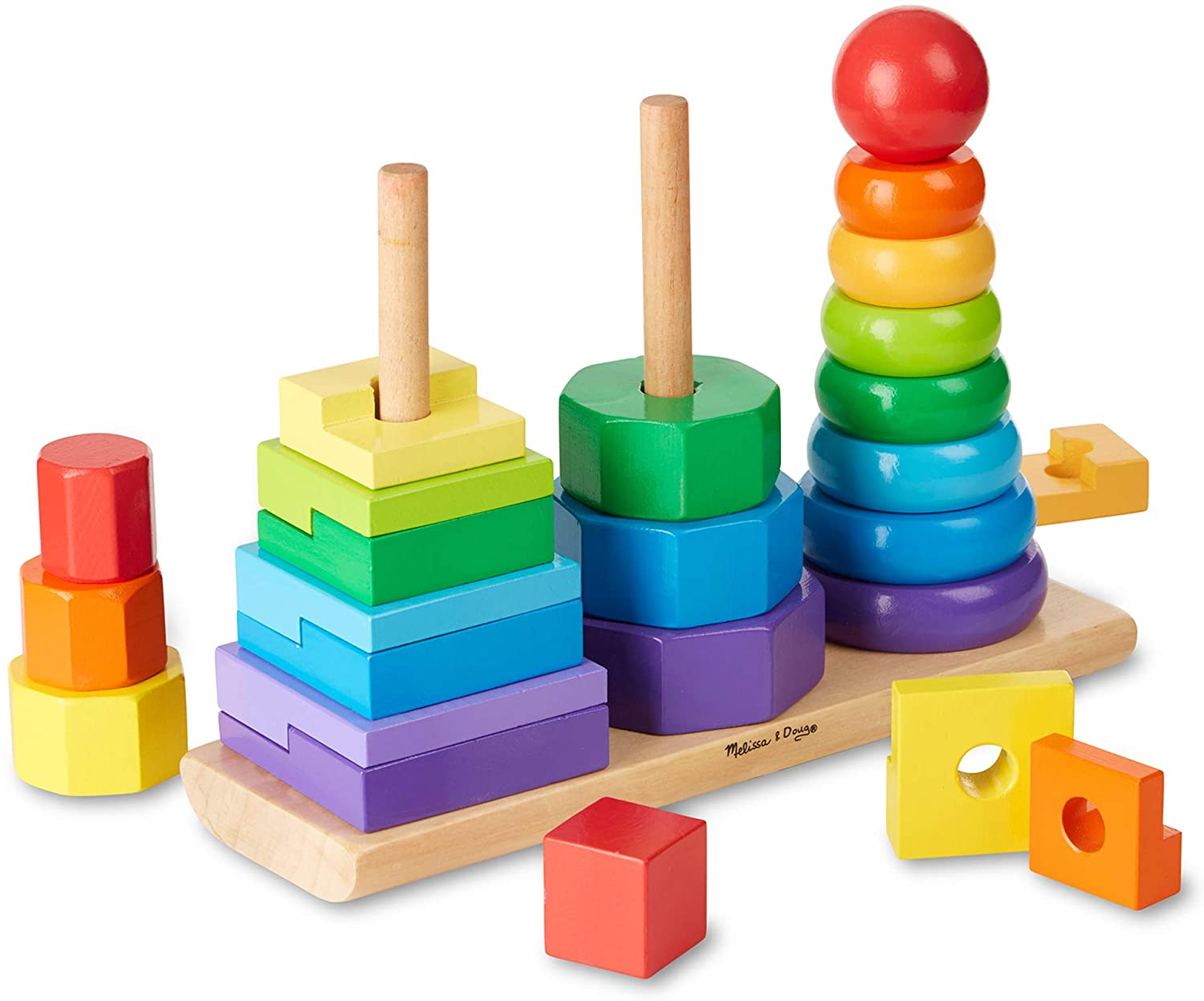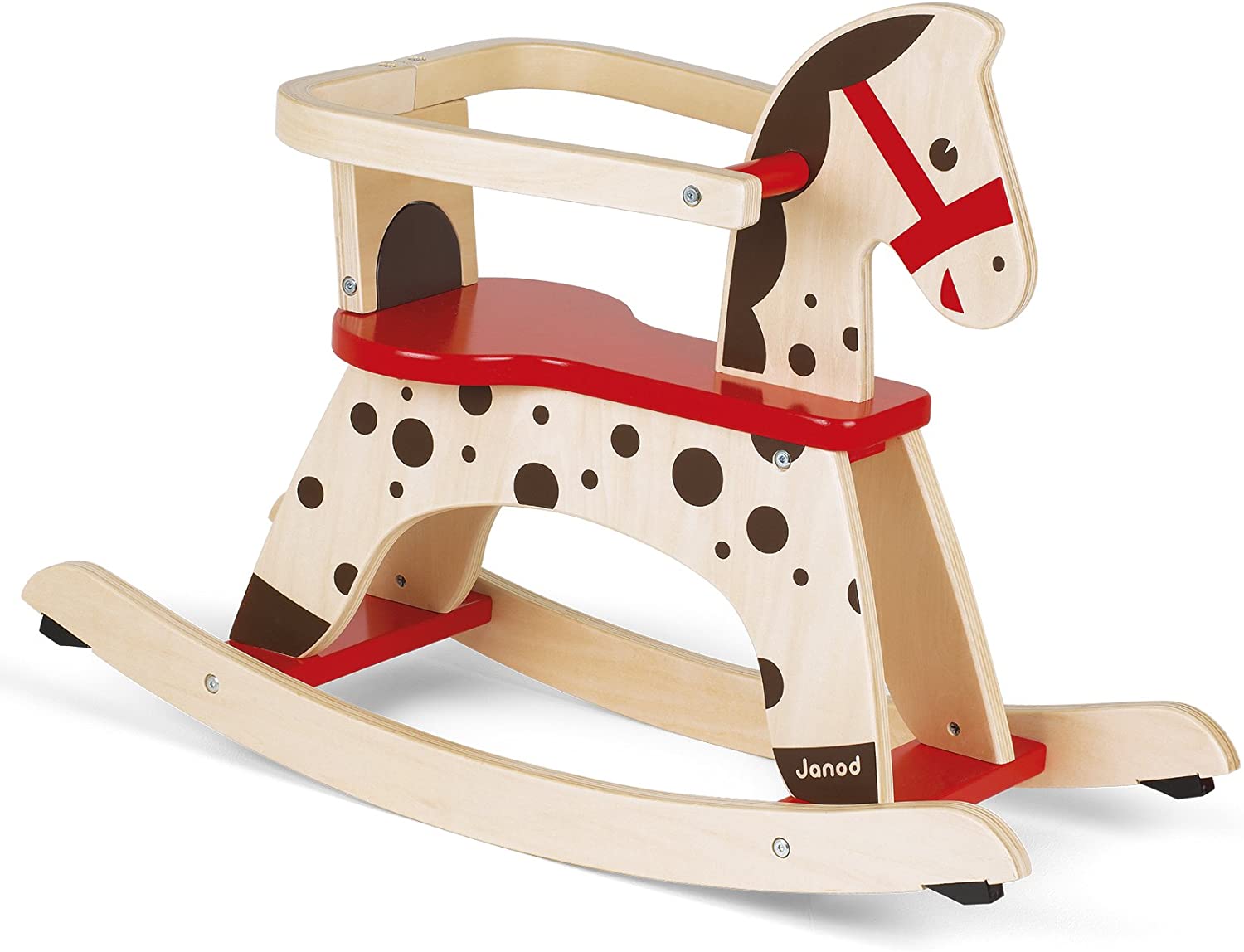It’s Christmas morning. Impatient as ever, the children can no longer stay in bed… at full speed, they rush down the stairs to the living room where the Christmas tree stands. And it doesn’t matter if the parents are still asleep, this morning it’s time to discover the presents that Santa Claus has placed at the foot of the tree. “Please Santa, no clothes or necessities, I want toys, period! Did the child say “toy”? Of course, because it is nowadays accepted (and normal) that Christmas is the child’s holiday. Christmas toys are expected, wished for, demanded and even chosen long before 25 December. Can you imagine parents refusing to give their children what is now their due?
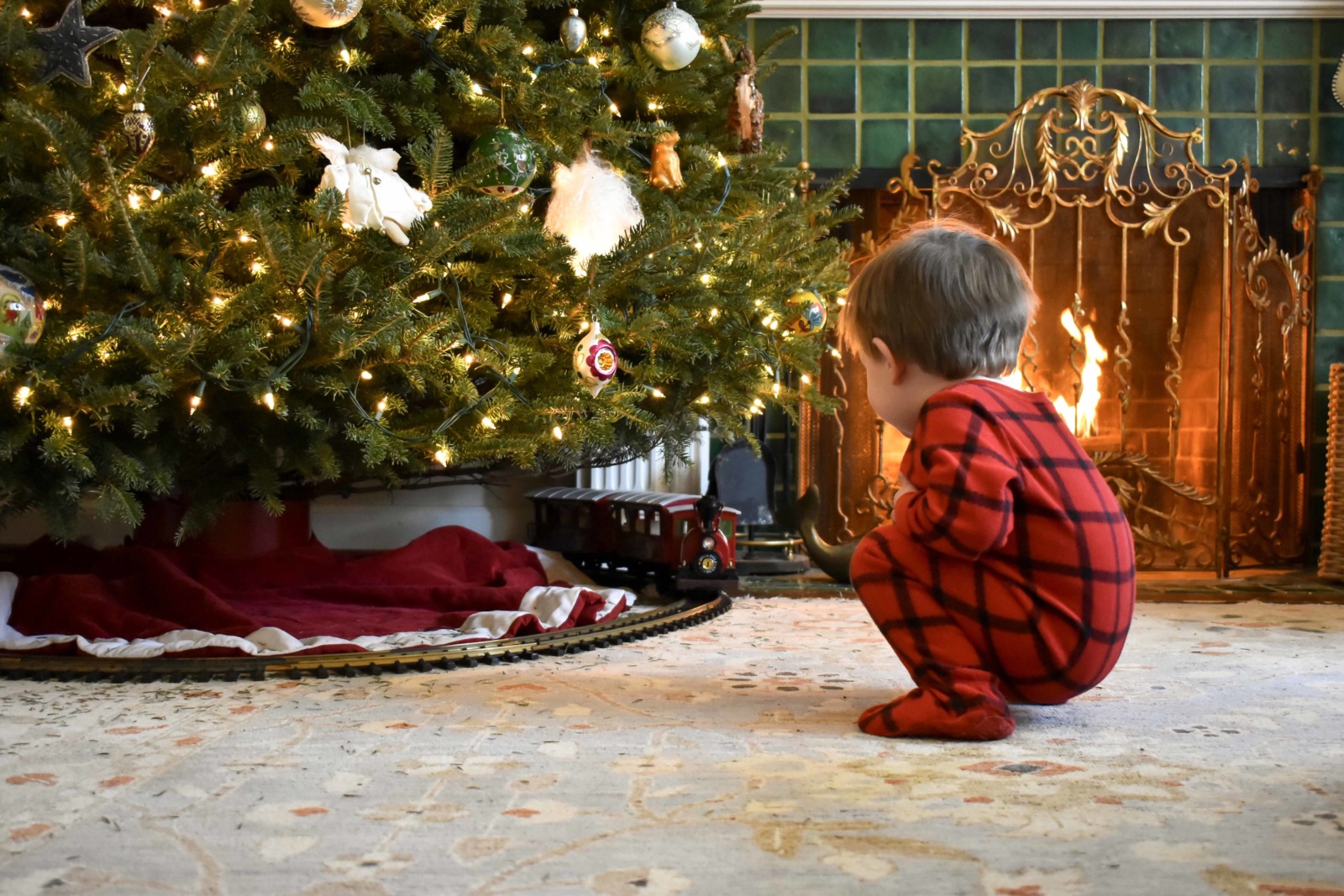
But where does this tradition of giving Christmas toys to our little ones come from? Is it an ancestral tradition followed by every family in France? How long has the Père Noël been jumping from chimney to chimney to distribute Christmas toys and games? I’ve done my research and you’ll be amazed! While there is an almost magical link between children and Christmas, it hasn’t always been that way. In this article, we will go back in time to find out more about the evolution of our Christmas traditions and customs in France… But first, let’s get to the famous toys with 10 Christmas gift ideas!
[lwptoc]
Christmas toys today
The Christmas toys that children add to their gift list change from year to year. But they don’t alter the enthusiasm of our little ones.
Just take a look at the toys that children will want to play with in 2021. Yes, those famous Christmas toys that parents and children fought tooth and nail to bring home!
In 2021, the trend of the top 5 Christmas toys for kids in France is as follows:
Lloyd’s Steel Dragon – Ninjago – LEGO
For children from 8 years old to 14 – 16 years old. Lego Ninjago construction toy will allow you to build a faithful recreation of the very famous Lloyd’s Steel Dragon! Find out more about this toy…
Hatchimals Egg Pack 10 surprise eggs to collect
A mega Hatchimals egg to hatch to discover a maximum of surprises!
The giant surprise pack includes 10 Hatchimals figurines to collect, 1 Hatchimals Pixie and more than 20 accessories: 10 crowns, 6 accessories for your Hatchimals Pixie, lipgloss, stickers, 3 tokens for the Hatchtopia Life application… from 5 years old. Find out more about this toy…
Fighting Set – Beyblade Burst
An ultra-complete BeyBlade fighting arena that consists of an arena, two spinning tops and two throwers. For ages 6 – 8. Find out more about this toy…
Bunchems Game Box
With Bunchems you can create anything, just press them together! They stick together without glue, water or heat and can be repeated endlessly. More than 400 bunchems, including 360 with a “crystal effect”. From 4 years old. Find out more about this toy…
Magic Tracks flexible light-up car circuit
A Christmas toy that meets an impressive success in France and all over the world! This new generation of lighted car circuits is 3.15 m long and includes 1 red-lighted 4×4 car with 3 LEDs. Find out more about this toy…
Traditional Christmas toys
The traditional side of Christmas toys is often associated with handmade and wooden items.
Wooden toys: origin and history
The very first wooden toys in history date back to ancient times. Archaeologists have found them in Egypt and they date back to around 3000 BC.
But of course, these were not wooden Christmas toys!
The French word “jouet” (toy) appeared in the French language in the 13th century. It derives from “petit jeu” (little game).
In the Middle Ages, there were manufacturers of wooden toys whose products were sold by merchants at fairs and markets on St. Nicholas’ Day, including the one in Nuremberg, Germany.
In the 17th century, the first rocking horse is mentioned. It was first produced for the general public in the 1840s.
In 1790, cartographer John Spilsbury invented the first wooden puzzle. It was a map to help children memorise European geography.
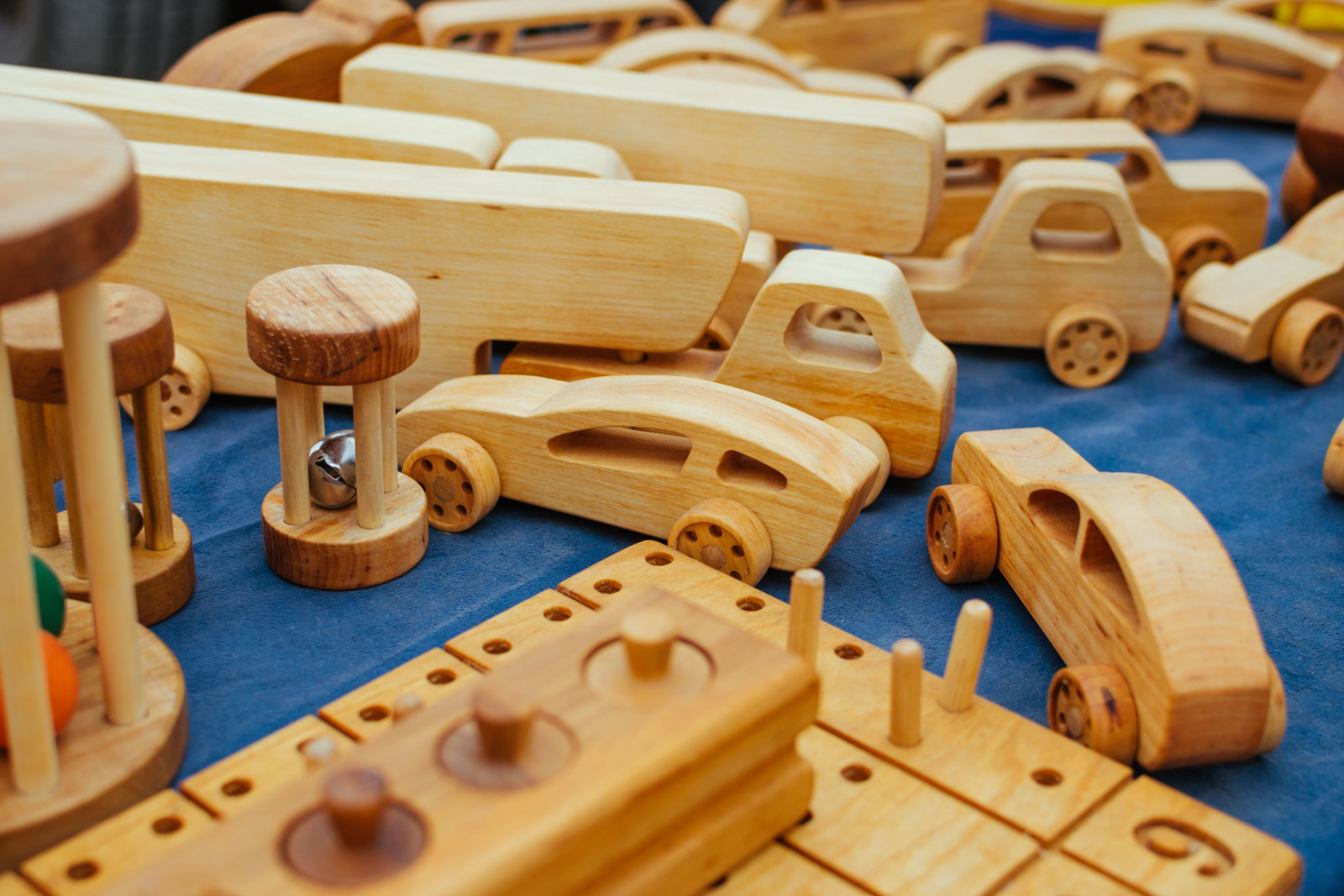
Wooden toys are popular today
Today, wooden toys are rarely found on the shelves of supermarkets, but the charm and appeal of these old-fashioned objects have kept a number of wooden toy manufacturers in the business.
In France, there are several brands that continue to produce wooden objects for children. We can mention Kapla with its famous planks that allow children to build many constructions, as well as Janod or Jouécabois.
Many craftsmen continue to keep the tradition of wooden toys alive, making skittles, small horses, chess games and even puzzles to assemble. The large forest cover in France is not foreign to this article. Indeed, the vast forests of beech or pine in the Jura or Vosges allow an excellent supply of wood.
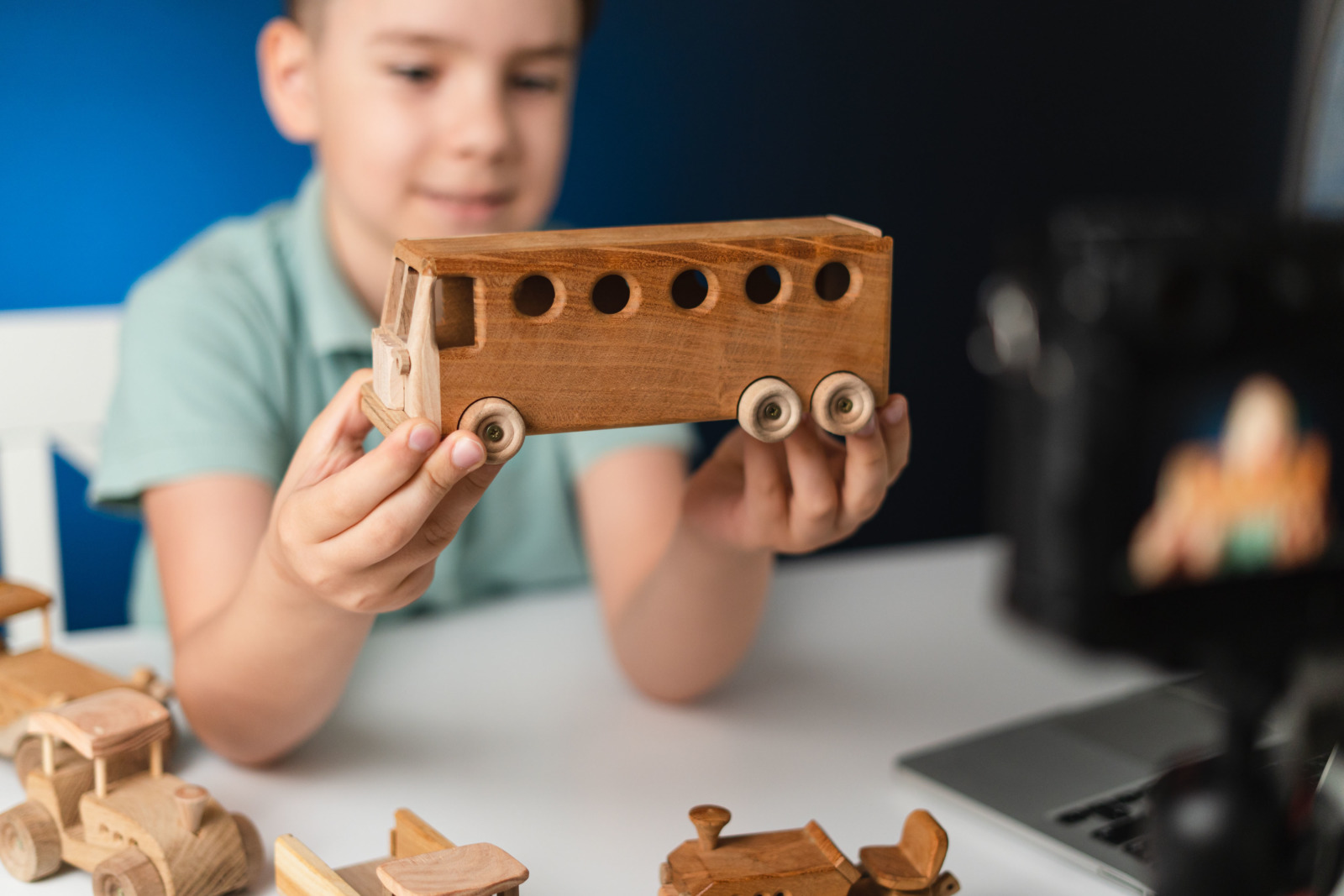
Here are 5 examples of wooden toys available on Amazon (affiliate link):
Kapla
The box of 100 original wooden boards from Kapla. Read more…
GameJura
The building set: My Wooden Chalet by JeuJura (135 pieces). Read more…
Colourful developmental stacking toy
This colourful geometric shape stacker by Melissa & Doug contains 25 pieces. Read more…
Wooden Rocking Horse
A 100% wooden rocking horse by Janod with traditional colours and design, suitable for all children from 1 year old and makes a great room decoration item. Read more…
Set of 100 COOLJOY wooden magnetic puzzle cards
With over 100 puzzle cards (including animals, plants), children can design different pictures with matching magnetic pieces. Develops children’s understanding of colours, shapes and patterns, inspires children’s creativity and imagination. Read more…
Why do we give presents at Christmas?
I had already researched the tradition of Christmas presents which was published on the blog.
I revealed that the first Christmas gift was the one given by the Three Wise Men to the baby Jesus on the Epiphany.
The gifts of Saturnalia
In ancient times, the distribution of gifts was a central part of the Saturnalia festival (7 days of celebrations around the winter solstice). In Rome, for example, the gifts given were of the utmost importance, with conifer branches from the tomb of the goddess Strenia. These were presented on 1 January in honour of the emperor.
Gradually, the branches were replaced by golden gifts or small cakes, and the whole ceremony was lit by candles, lit to symbolise eternal life.
The Romans also exchanged personal gifts, with dolls and special toys for children.
Christmas gifts from the Middle Ages to the early 20th century
In medieval times, the distribution of expensive gifts between princes and nobles was part of a special ritual. The most expensive gifts were displayed to the public.
Before the middle of the 19th century, even though people received a few gifts and toys, the celebrations (mainly feasting and drinking!) were for adults.
Then, the custom of exchanging gifts at Christmas supplanted the New Year’s gifts in the late 19th and early 20th centuries.
But there is one aspect of the Christmas gift that I had not mentioned: the centrality of the child at Christmas. And therefore the custom of giving them games and toys at Christmas (and not just oranges!)

A whole story of perspective!
This article will fill in that little bit of mystery and, believe me, set the Christmas party into context.
After all, what is Christmas?
The answer depends on each person. On each family. And sometimes in the country you live in.
Personally, Christmas is first and foremost a celebration of the birth of Jesus Christ, and secondly a celebration of gift-giving.
This does not prevent us from blessing our daughter with gifts on 25 December.

But for our family, the message of the Nativity is the central point of the celebration… even if it is unlikely that Jesus was born on December 25th!
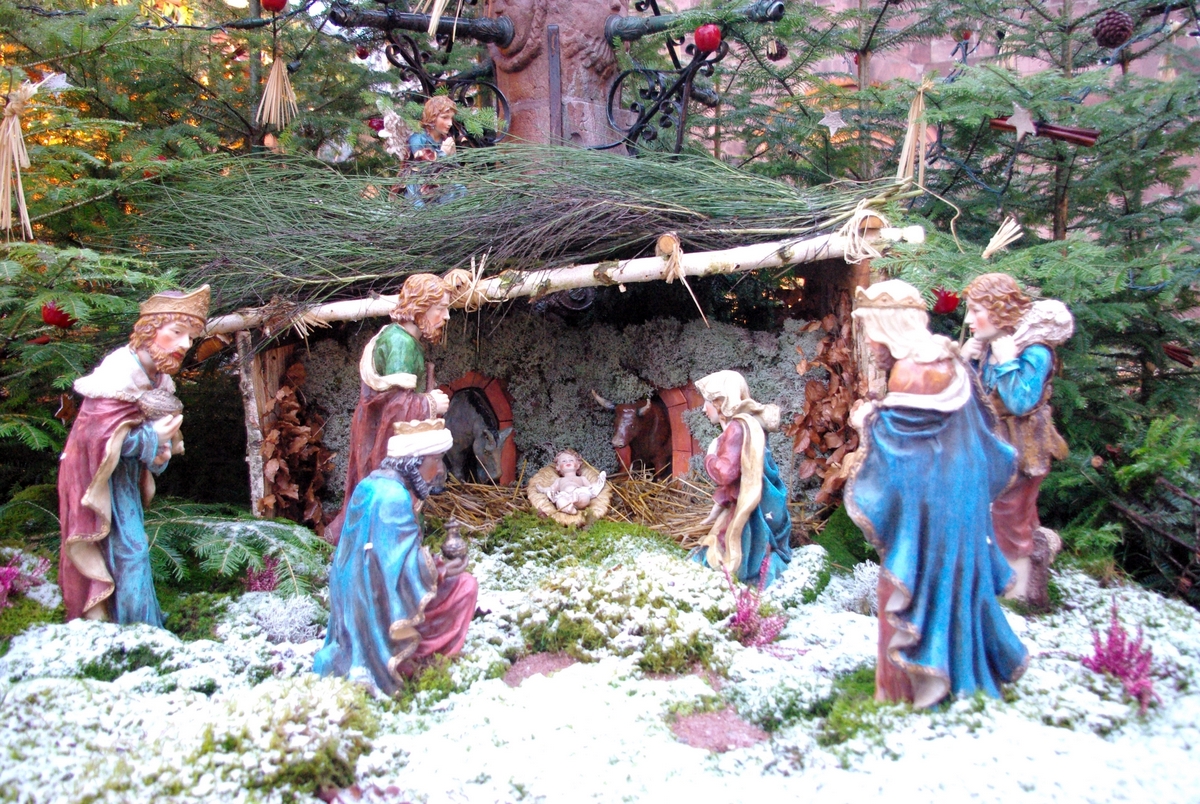
Putting Christmas and our traditions (which change from year to year) into perspective helps to put things into perspective. Especially if you are anxious about preparing for the party. The shopping spree, the traffic jams around the supermarkets, the overdose of Christmas pop music in the shops, the long family dinners, the hangover the day after Christmas Eve…
Does Christmas have to be so complicated?

Christmas before Christmas
Let’s go back in time and set the scene: the USA – early 19th century.
In the 1840s, Christmas was felt to be a holiday in rapid decline.
American writers lamented that the golden age of Christmas was gone for good.
Many older people, who remembered the Christmas celebrations of the 18th century, were nostalgic for the traditional festivities and merriment.
These had been abandoned in favour of religious, pious and depressing commemoration.
For a short time, this Christmas spirit was lost, confused by the static morality of the Victorian era.
Until a character from European legend came along.
This character was given the role of friend and protector. And above all as a distributor of gifts for children. You have recognized him: it is Santa Claus!
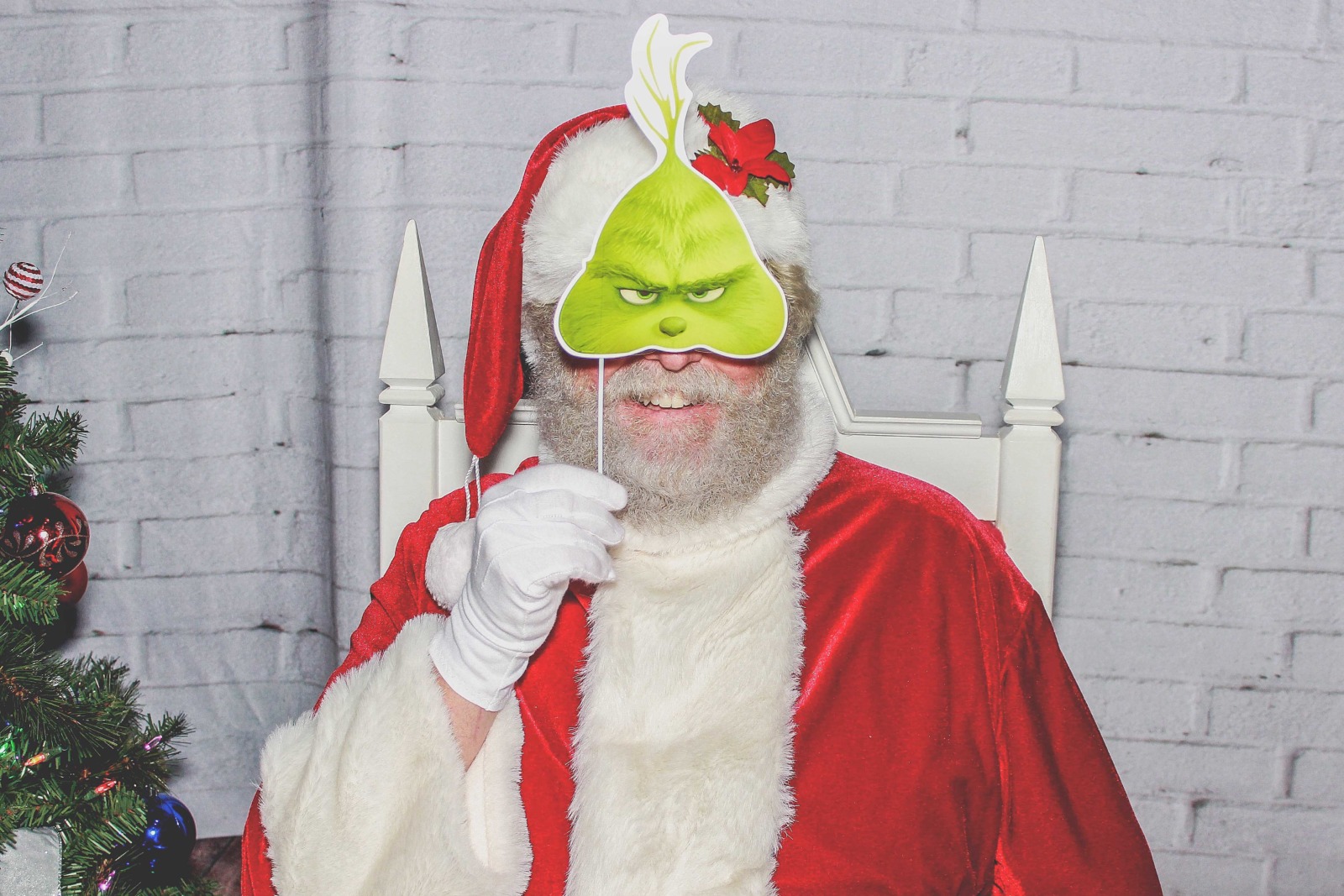
When Christmas was born in the 1840s
Christmas, as we know it today, took shape in the last quarter of the 19th century. Its popularity was growing simultaneously with increasing commercial exploitation.
Oh, let’s face it, the commercial element of Christmas has always been there… the German Christmas markets and their medieval antecedents, the St Nicholas markets, come to mind. But the commercial issues were of concern to those who celebrated the festival, i.e. the Christians. What was new was that even agnostics began to accept the winter celebration with as much gusto as the Christians.
From that moment on, everything changed in the conception of Christmas.
In Europe, a change in trade policies gave a big boost.
In the 1840s, the UK dramatically reduced import duties on foreign foods. This encouraged shops to stock sweets and candied fruit produced in France and Spain.
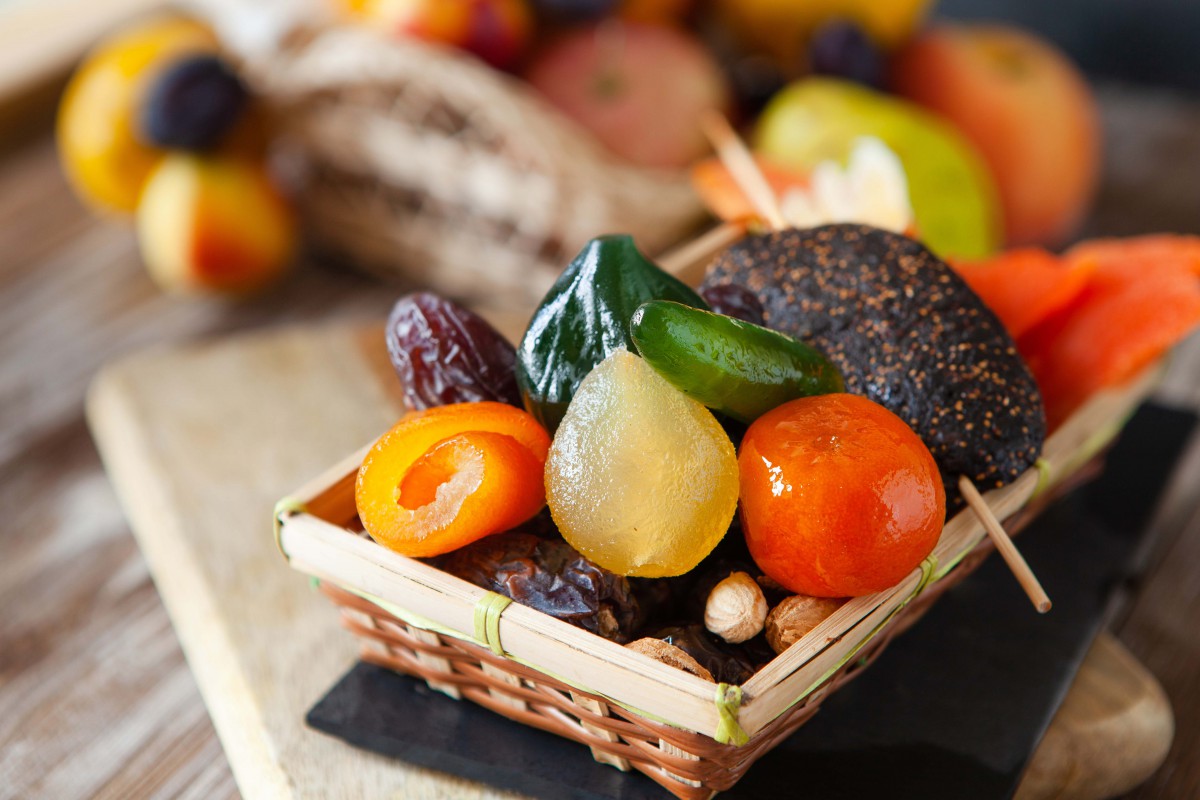
The English goose clubs
In England, the needs of the poor were met by the many “Goose Clubs”.
What about the Goose Clubs?
In Victorian times, some working families did not have access to banks. To save for their Christmas dinner, they pledged a small sum each week to a ‘goose club’. In those days, goose meat was still considered superior to other poultry and replaced turkey on Christmas tables.
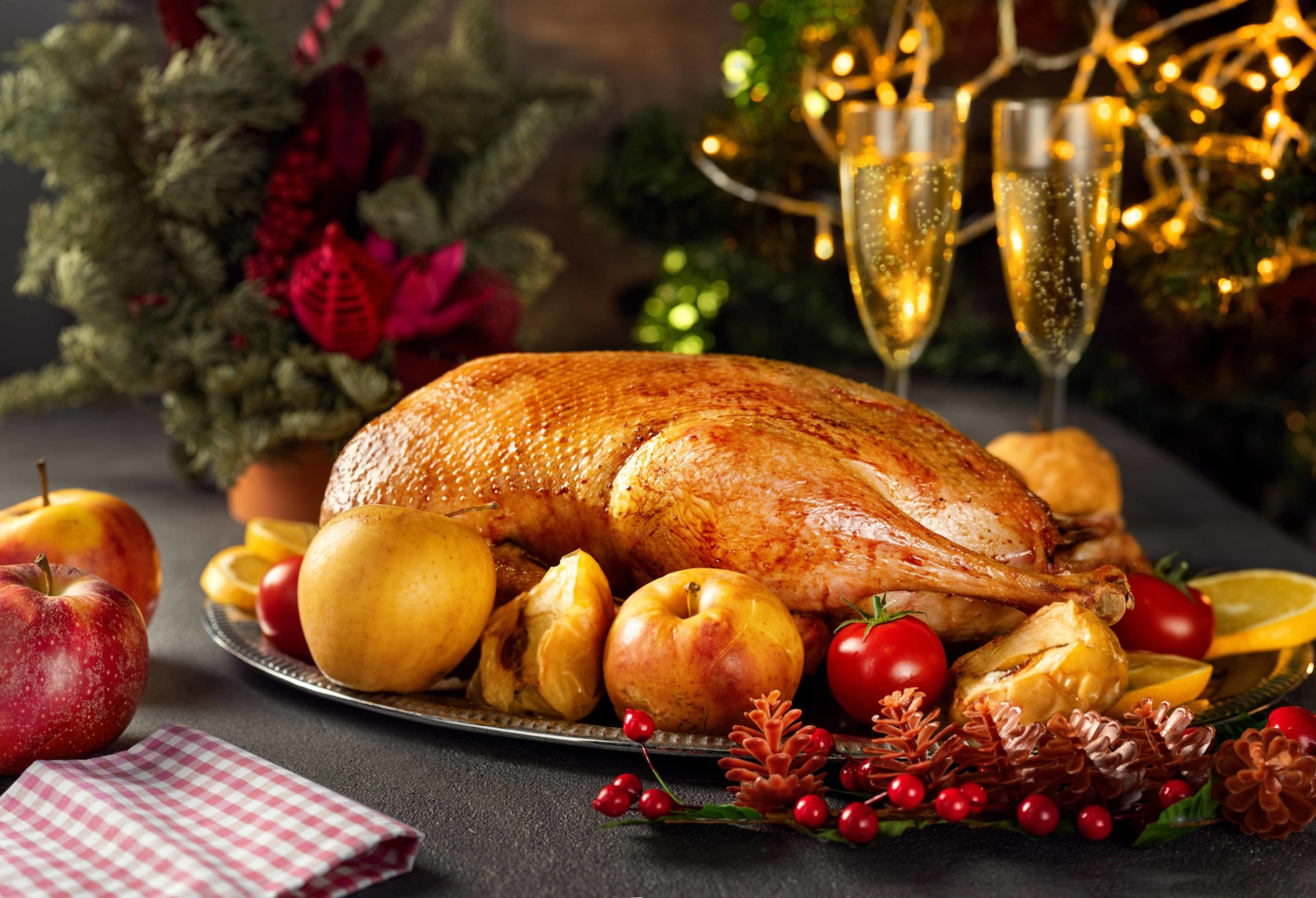
The Christmas of the Industrial Revolution!
As a result, the living conditions of the working classes in Europe and America improved, with better wages paid in heavy industry and in some specialised manufacturing sectors.
Our traditional greetings cards often depict an idealised image of a stagecoach driving through a picturesque village in a snowy landscape. However, it was the more integrated world of the railway that gave businesses greater regional and national reach as newspapers and magazines sold them advertising space to promote goods.

Thus, improved communications, especially with the extension of the rail network across Europe, allowed people working in the cities to organise more affordable Christmas visits home.
Coming home for Christmas
By the end of the century, ‘coming home for Christmas’ became a reality not only for the wealthy but also for the working and middle classes.
Few people were concerned about the relatively recent development of this ‘new Christmas’ and quickly chose to evolve their own family traditions.
It is this continuing adaptability of Christmas that has ensured its survival to the present day. Then institutions, shops and churches appropriated certain facets of this ‘new Christmas’ and developed them in their own way.
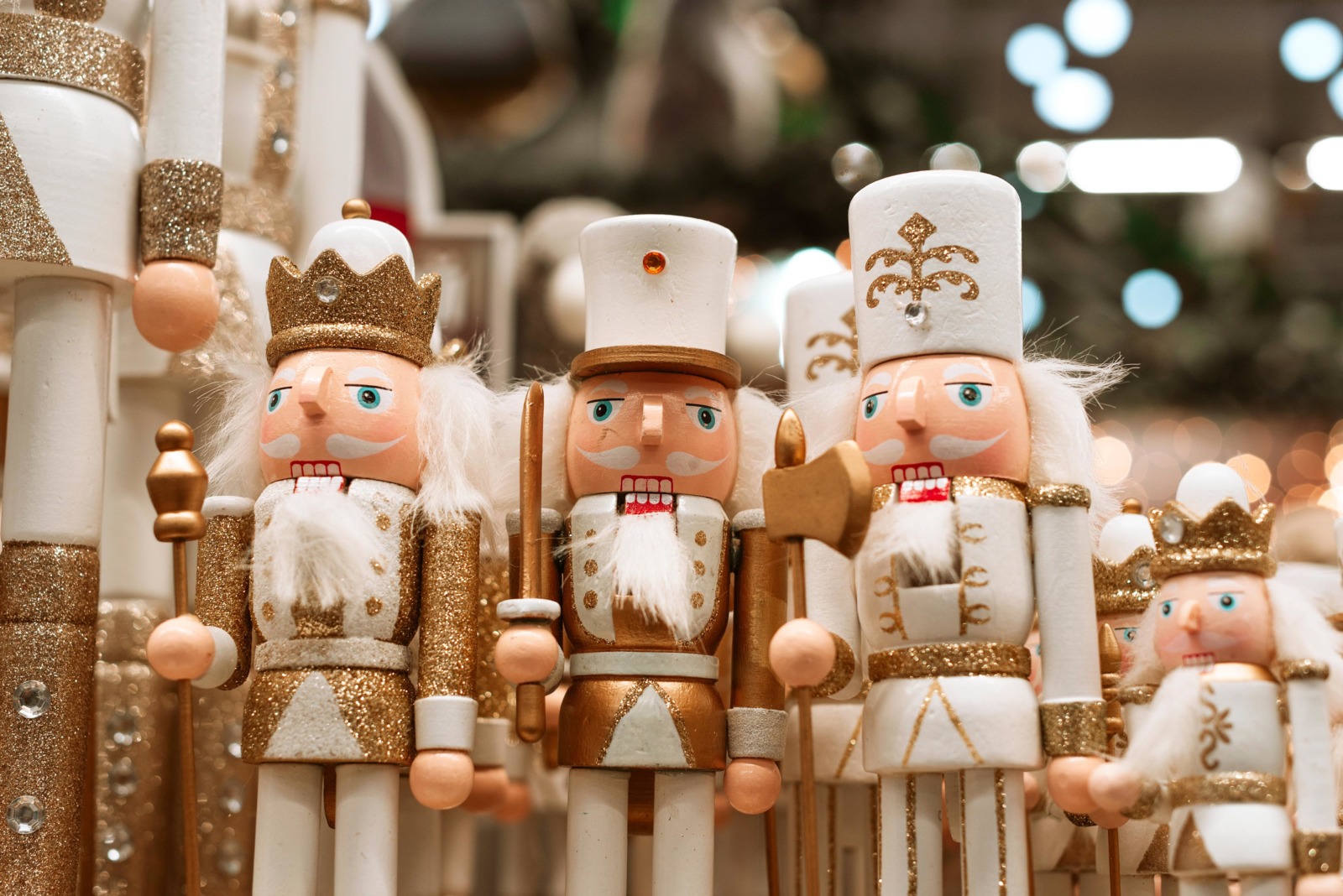
The strategic role of American department stores
Also from the middle of the 19th century onwards, English and American merchants were quick to seize the commercial opportunities offered by the elevation of Christmas to the status of a major national holiday.
By the 1880s, department stores were already vying with each other to offer superb Christmas windows to attract customers.
In those days, many Europeans had relatives in America. These were Europeans who had emigrated to the United States in the 1840s and 1850s. From New York, Boston or Philadelphia, they wrote to them about the extravagance of American ballrooms, shops and restaurants at Christmas.
The windows of New York department stores
In the late 19th century, Manhattan department stores competed to stage the most attractive displays, with special teams of artists and craftsmen working throughout the year on these extraordinary scenes.
Because of its large toy department, the New York department stores’ Macy’s, established in 1858, became a mecca for American children looking for quality toys.
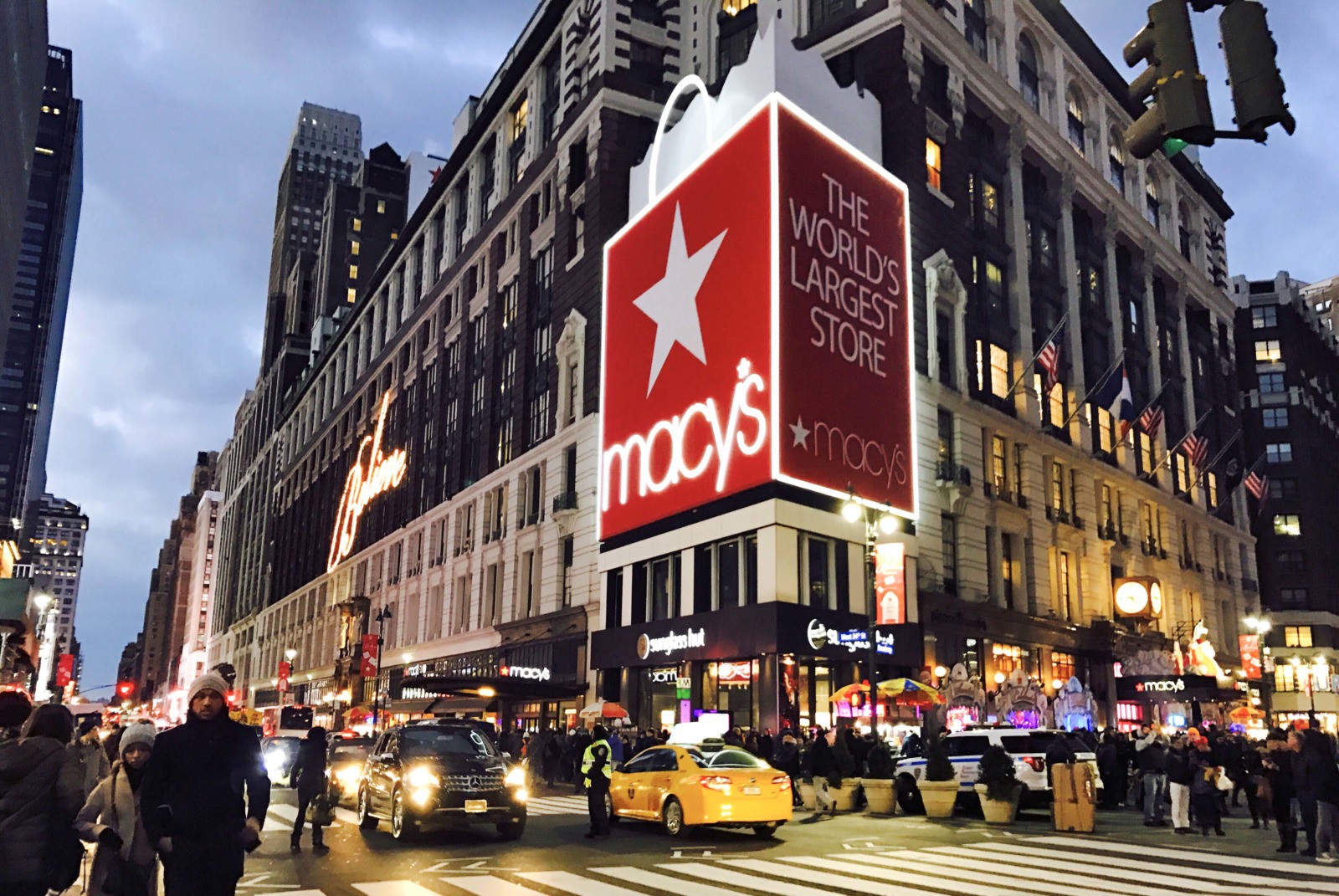
Lord and Taylor‘s window displays, assembled by more than a hundred full-time employees, offered New Yorkers a wonderful spectacle.
The Saks Christmas windows on Fifth Avenue, created by the same team, attracted similar family visits. After their opening in New York, the windows travelled to every shop in the country.
London and Paris department stores
In Europe, department stores were not left out.
In London, Liberty’s and Selfridge’s competed for the most exciting window displays, while Harrods aimed for a more conservative style. 19th-century journalists raved about the variety of gifts on display at Schoobrerad’s, Swan and Edgar’s and Debenham and Freebody’s in London. These were gifts for families and servants and, above all, for children, who were beginning to rule Christmas with their demands.
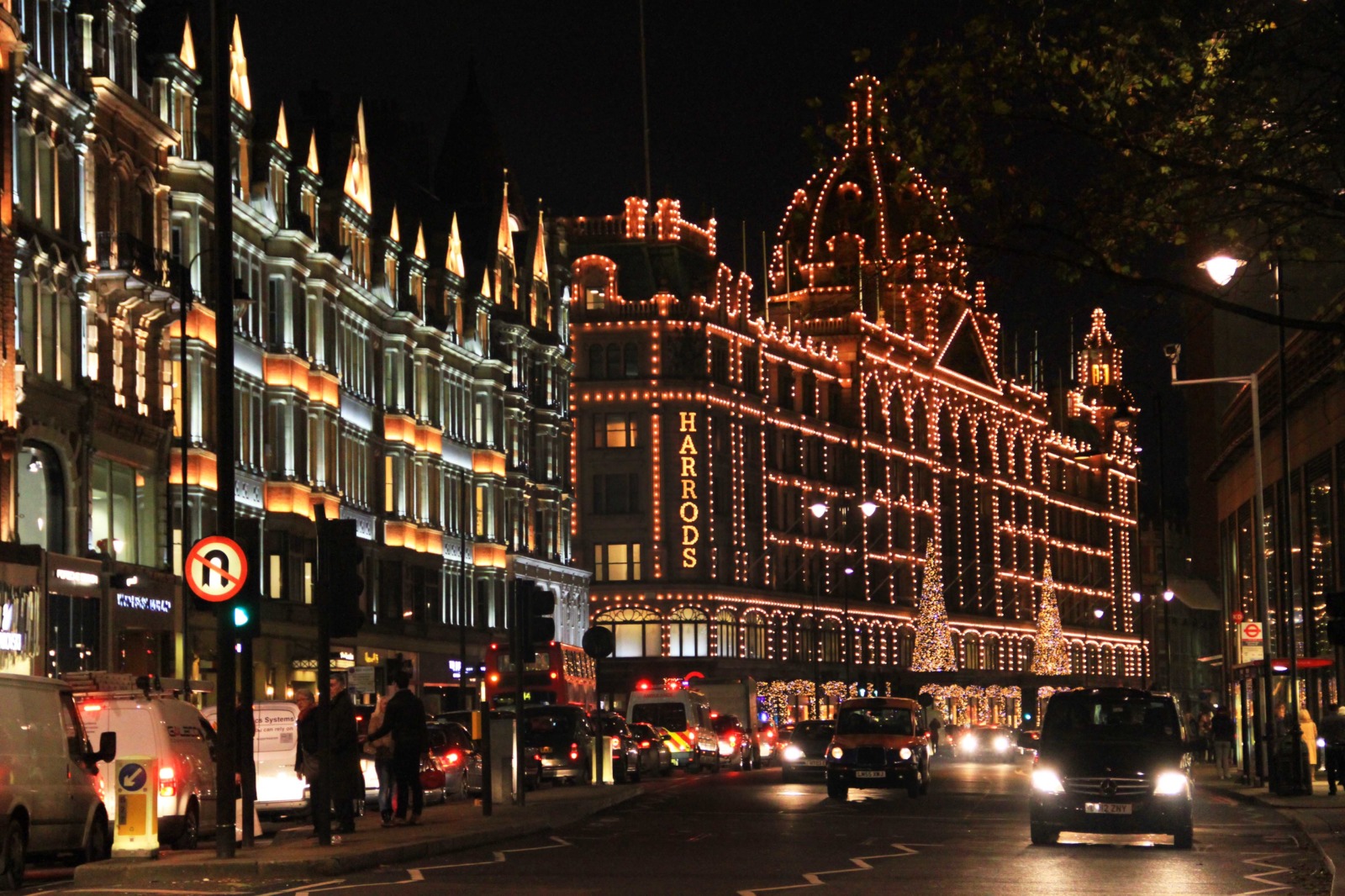
In France, and especially in Paris, department stores contributed to the development of the custom of giving children gifts at Christmas. To start the fashion, most department stores published Christmas catalogues. With the benefit of hindsight, those of Le Bon Marché and Galeries Lafayette in Paris are an invaluable record of contemporary styles and tastes in the late 19th and early 20th centuries.
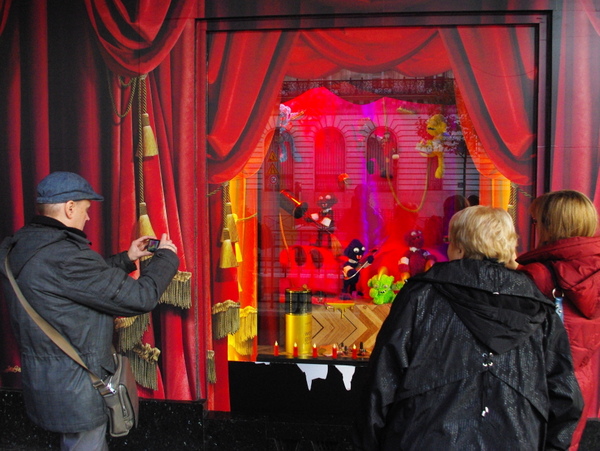
Children’s Christmas
It was in the second half of the 19th century that Christmas truly became the Saturnalia of children!
A wild Christmas!
Until the end of the 18th century, Christmas was a boisterous festival with its roots in the pre-Christian winter solstice and Roman Saturnalia celebrations. At that time of year, there was more drunkenness, debauchery and rowdiness than a peaceful atmosphere of “Silent Night, Holy Night”.
During the Christmas season, believers would go to church and then celebrate in an atmosphere of debauchery and carnival similar to that of today’s Mardi Gras. This was the “Fête des Fous” or “Fête des Innocents”, celebrated in medieval France on 26, 27 and 28 December.

Christmas upside down in England
In England, each year a beggar or student was crowned “Lord of Misrule” and the enthusiastic celebrants acted as his subjects. The poor would go to the houses of the rich and demand their best food and drink. If the owners did not comply, their visitors would terrorise them with mischief.
Christmas became the time of year when the upper classes could repay their real or imagined “debt” to society by entertaining the less fortunate citizens.
So Christmas was forbidden!
As a result, the drunken rowdiness of the festive season, and its pagan roots, became threatening to the religious and political authorities. The latter discouraged the celebration of Christmas and even banned it in the 17th and 18th centuries.
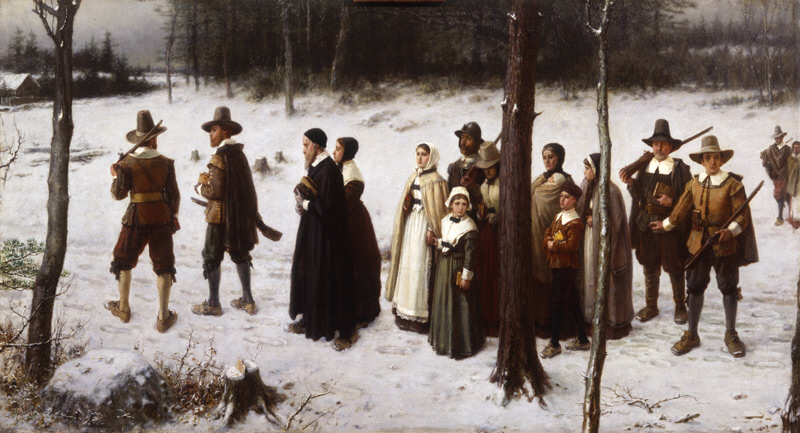
These bans were led by :
- in England: the Roundheads led by Oliver Cromwell (the Puritan Parliamentarians) during the First English Revolution (mid-17th century).
- In America: the Puritans of New England from the 1620s onwards. For example, from 1659 to 1681, the celebration of Christmas was forbidden in Boston. Anyone showing the Christmas spirit was fined five shillings. In fact, Christmas was not declared a federal holiday until June 26, 1870.
So how did Christmas change from a festival of drinking and mischief to the family celebration we know today?
That’s where the children come in!
Until the end of the 18th century, the Western world saw children as the bearers of original sin who needed to be disciplined towards goodness. But in the 19th century, romantic ideals of childhood innocence took hold, with children becoming the precious and innocent guardians of Life.
As we have seen, it was also at this time that Christmas began to be transformed into a family-centred celebration – no longer about drinking, which was much more acceptable to the Church and public order.
This cultural shift can be seen in the composition of Christmas carols in the 19th century that focus on childhood: ‘Silent Night’, ‘What Child Is This’ and ‘Away in a Manger’.
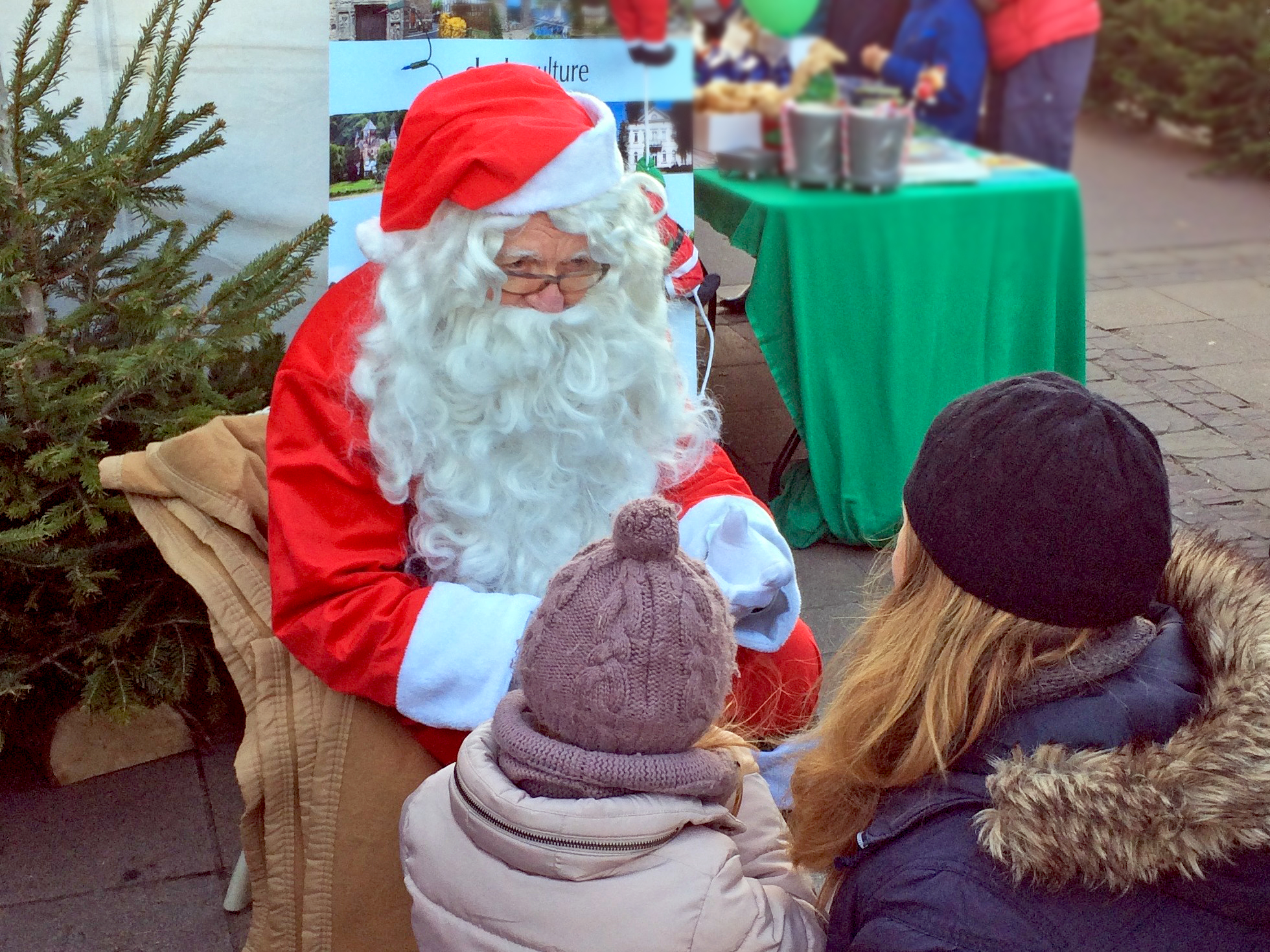
Another way to celebrate Christmas
However, the energy and excesses of the festive season have not disappeared.
On the contrary! Christmas used to bring together the rich and the poor, the dominant and the dependent according to the old feudal power structures. The new traditions of the 19th century shifted the focus of Christmas generosity from the lower classes to their own children.
At the same time, the upside-down spirit of the English Saturnalia and Wassailing had not entirely disappeared. Indeed, a child-centred Christmas could echo this while serving the newly industrialised economy.
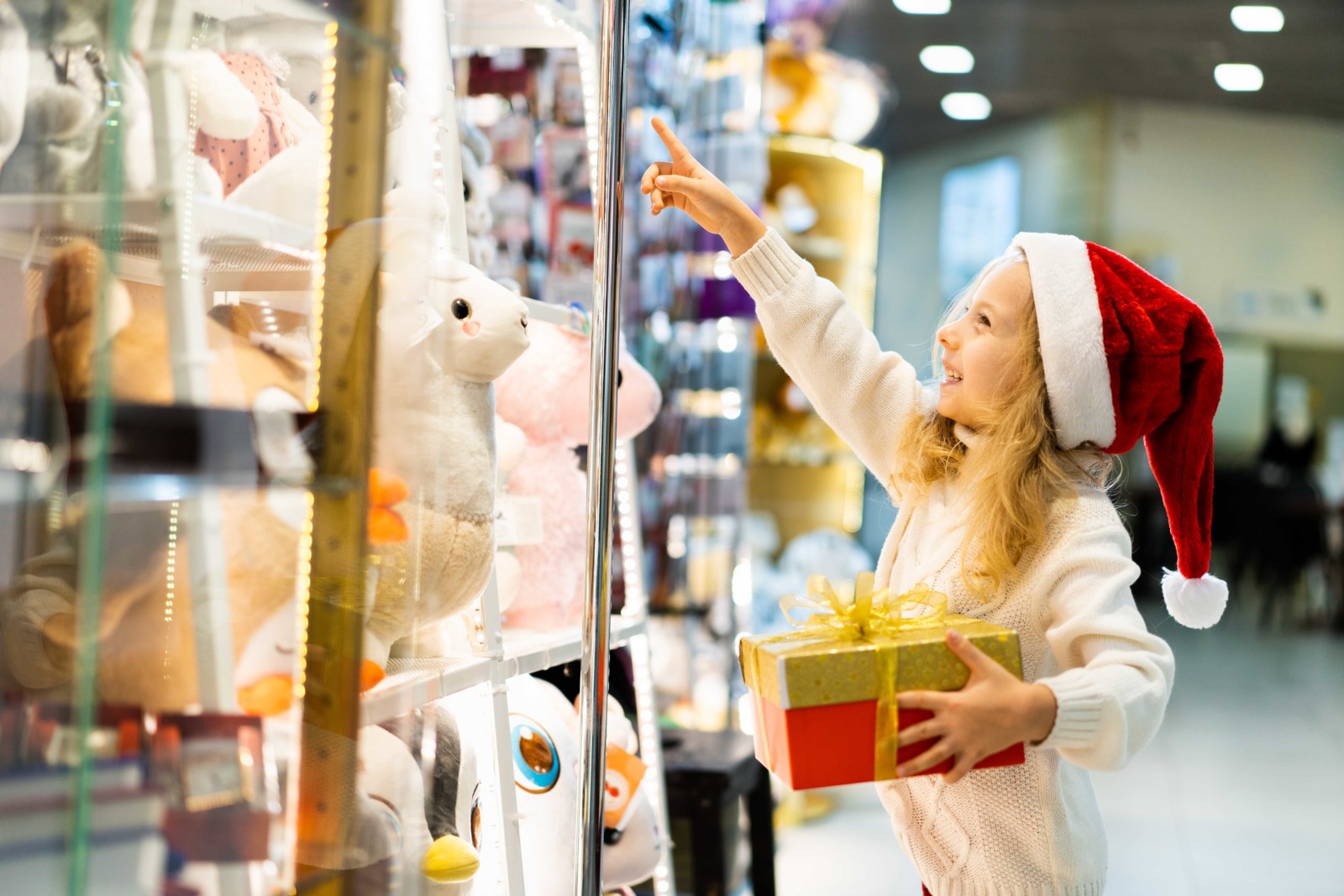
Children and adults dream of Christmas
By placing our own children at the centre of the celebration, the ancient ‘inversion of Christmas’ became less about social power (the poor demanding the rich). It allowed adults to take a childlike break from the rationalism, cynicism, and laborious routine of the rest of the year.
Thus, during this season, adults can psychologically share the enchanted spaces we now associate with childhood…
Yet, as early as the mid-19th century, writers complained that children were taking over the holiday season. The family home, like a ship, was “seized by a crew of mutinous little hands and navigated gaily through the frozen regions of the winter solstice with youth at the prow and pleasure at the helm.”

Thousands of toys in a shoe or a Christmas stocking
Once colour lithographic printing was introduced, it became economical to produce sets for special events (birthday, saint’s day) and especially for the Christmas season.
By the end of the century, there were music boxes, painting, writing and sewing sets, and drums, all decorated with Christmas trees and Father Christmas.
In France, balls, jumping jacks, Santa dolls and scrap leaves were ideal for ‘souliers de Noël‘ (Christmas shoes).

While in the United States and England, these were stockings, usually an old sock with a traditional piece of lucky coal in the toe.
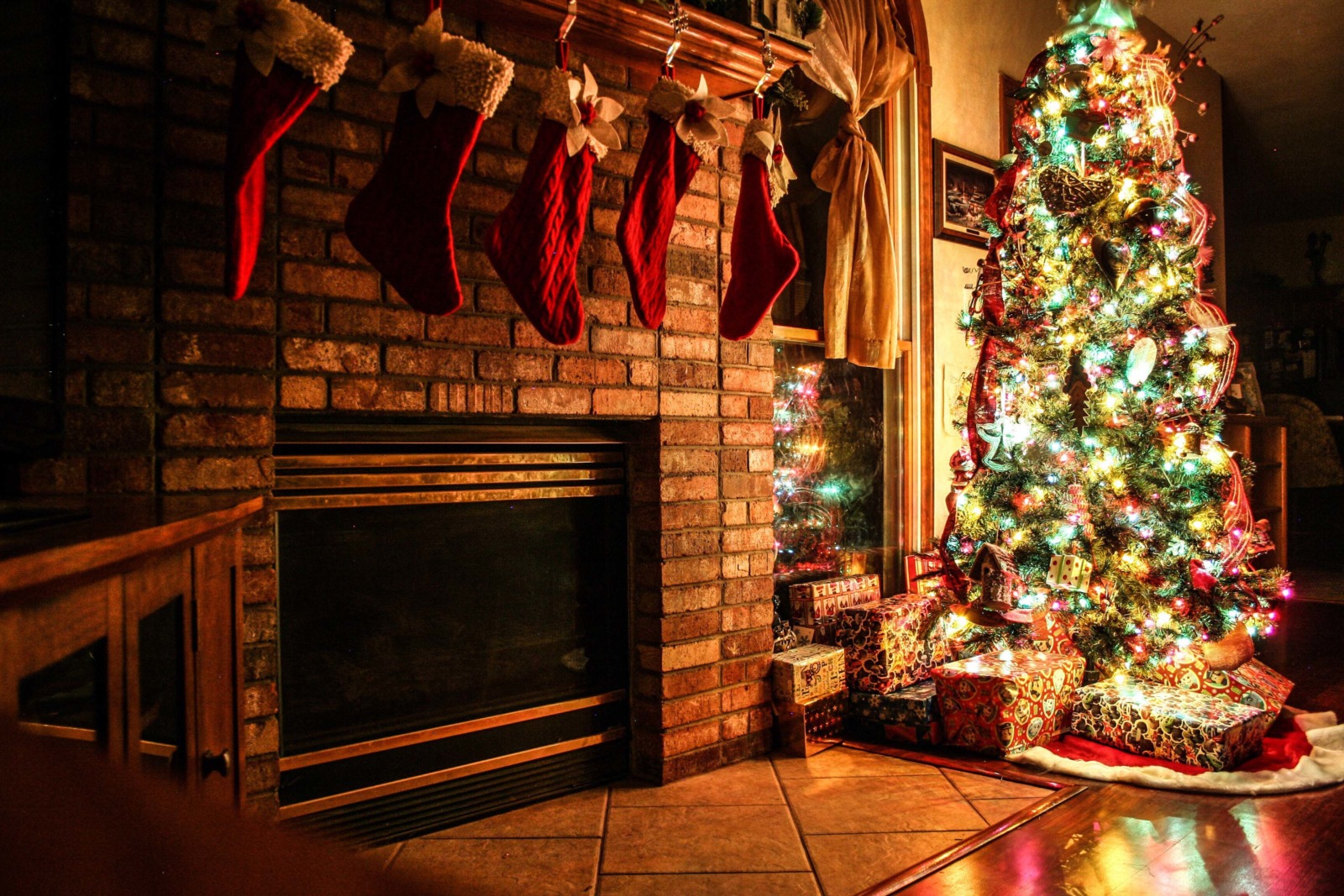
In poor families, children received an orange, a bag of nuts, some sweets and, if they were lucky, a single toy.
In those days, every family in Europe or the United States developed its own ritual for Christmas shoes or stockings and their contents. So much so that today they have become far too small and have been replaced by the wrapped presents under the tree.
Thank you, St Nicholas!
All these traditions about the shoe or the stocking developed from the story of St Nicholas.
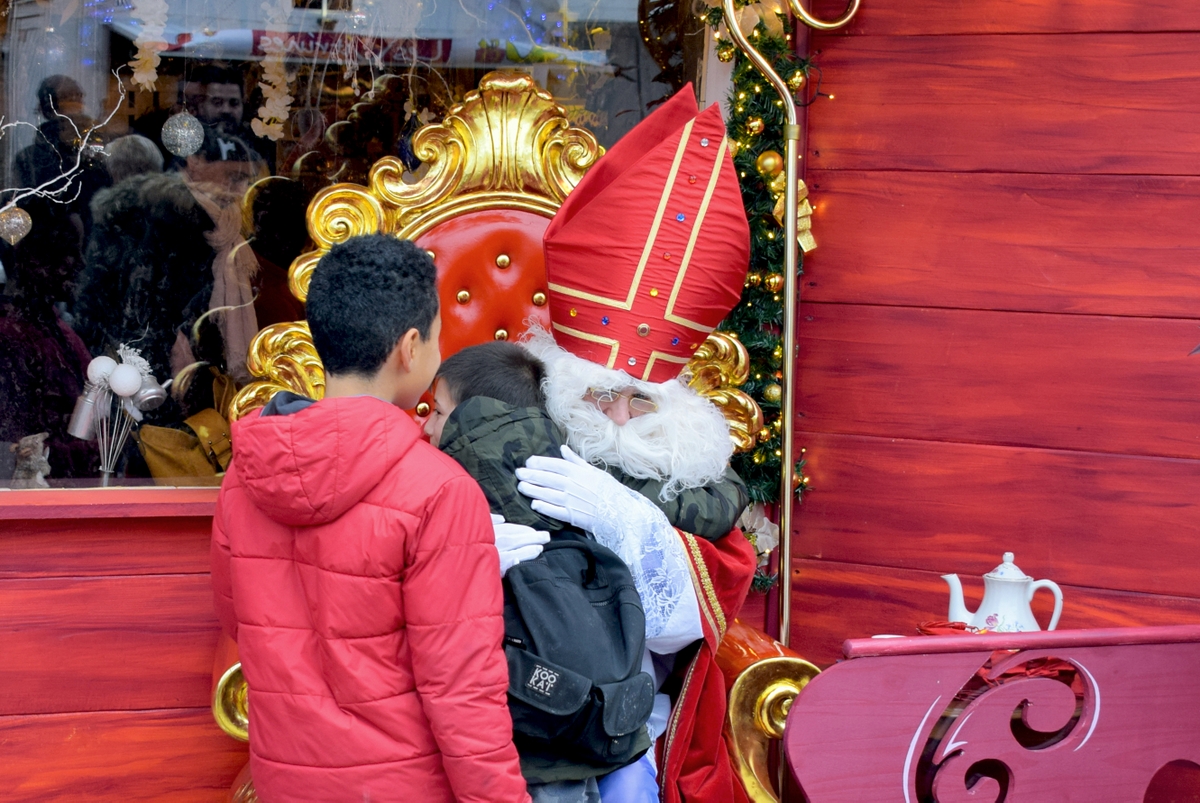
The legendary bishop is said to have given gold as a dowry to the three daughters of a man who had lost all his money.
In a cruder version, the young women would have been forced into prostitution if St Nicholas had not filled their stockings with gold.
What is the best Christmas present for a child?
The most obvious answer is a (Christmas!) toy.
But in the early 19th century, the concept of “toy” as we understand it today did not exist.
The word could mean any small object for a child: a cheap hairpin, a candy box or an ornament.
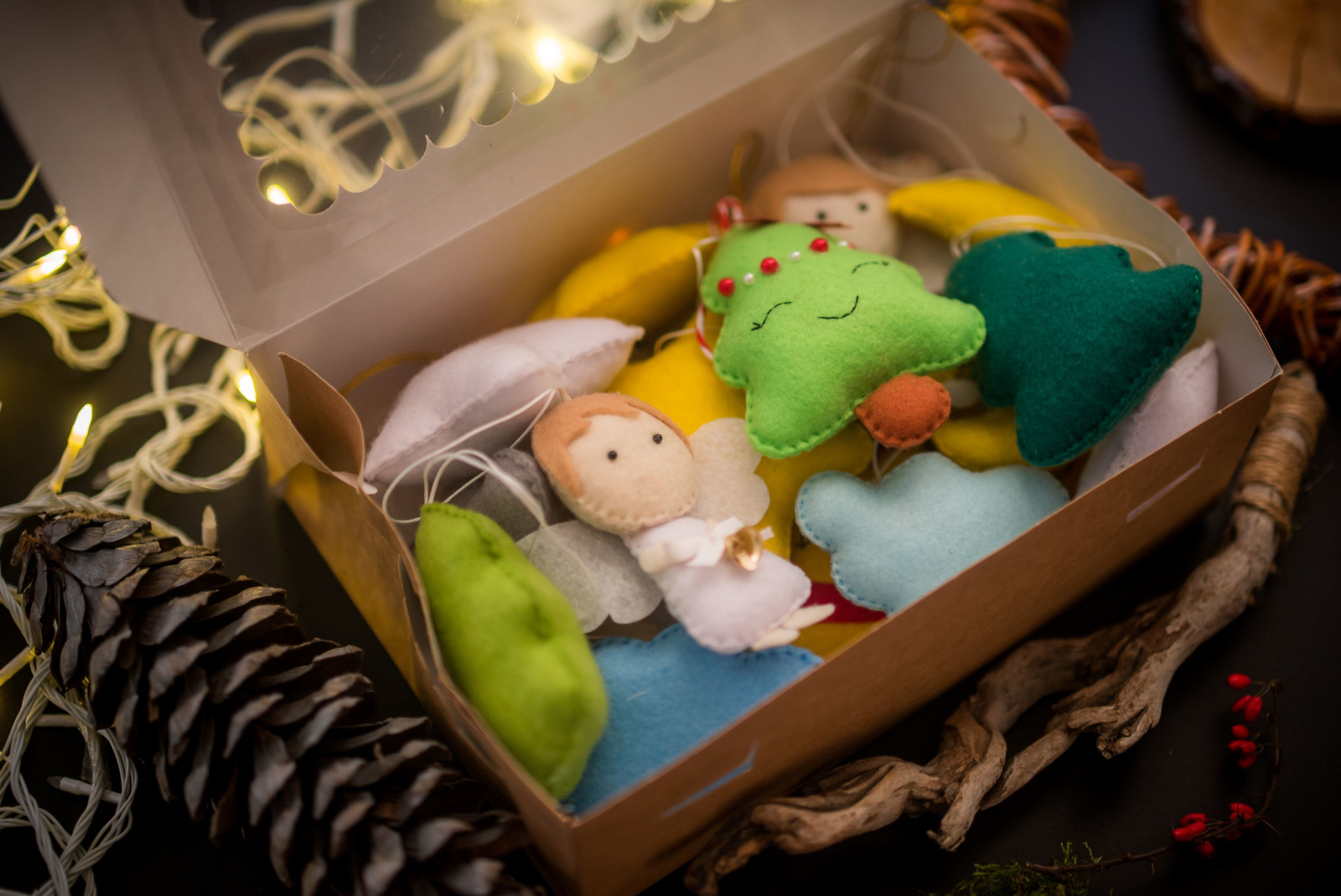
In the early 19th century, so-called toys could help boys and girls to “exercise their senses of the imagination, their imitative and inventive power” (Maria and Richard Lovell Edgeworth).
Parents were advised to give their children cheap toys rather than expensive miniature objects that would sit on a shelf. This way, children could really play with them. Even if they broke them, it would not be a tragedy!
Christmas toys through thick and thin
But can we really imagine Christmas without children’s toys and games?
Although many adults have exchanged – and still exchange – gifts at Christmas, for them Christmas is a family celebration in which the child is at the centre.
Even during the Great Depression, parents did their best to make sure their children had a special Christmas, turning their purchased gifts into homemade ones.
Christmas shoes (in France) or stockings (in the US and England) were filled with fruit such as apples or oranges, and small treats.

The Christmas toy craze in the post-war period
However, it was only after WW2, when most Western countries experienced a period of prosperity (the Trente Glorieuses in French), that modern Christmases began to be lavish.
In France, simultaneously with the appearance of the American Father Christmas (Santa Claus), the increase in income and the emphasis on consumerism contributed to the development of Christmas toys under the tree.

Christmas has become the most important time of the year. For several decades in the United States (and a few years in France), sales and promotions have generally been scheduled to begin on Black Friday and continue until Christmas Eve.
Learn more about Christmas toys
Reference sites
- The Christmas presents: origins and traditions
- The formidable story of Santa Claus in France
- Read this article in French on our blog Mon Grand-Est
- The Wikipedia article about toys
- An essay on How kids got to the heart of Christmas
- Christmas in the 19th century America on History Today
- History of Christmas on History.com
- Why we give children toys for Christmas on Daily Jstor
A pin for Pinterest
